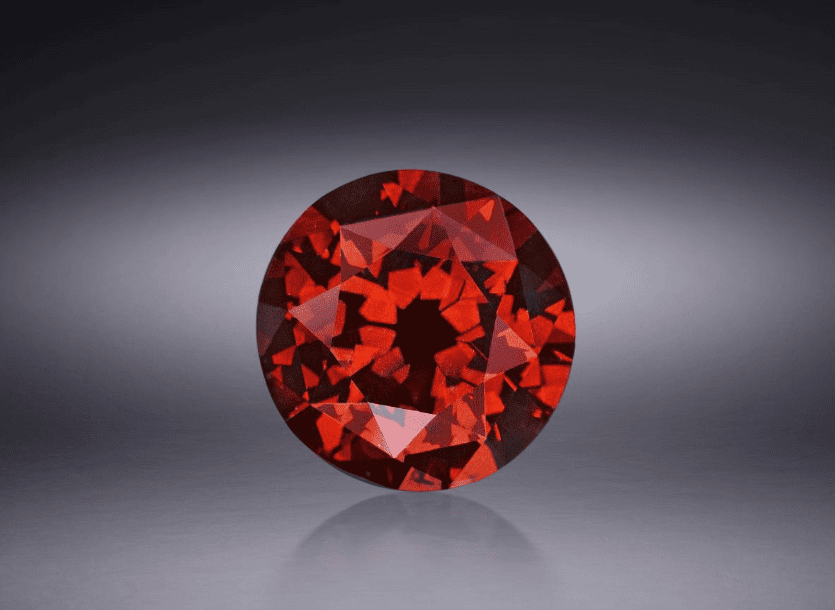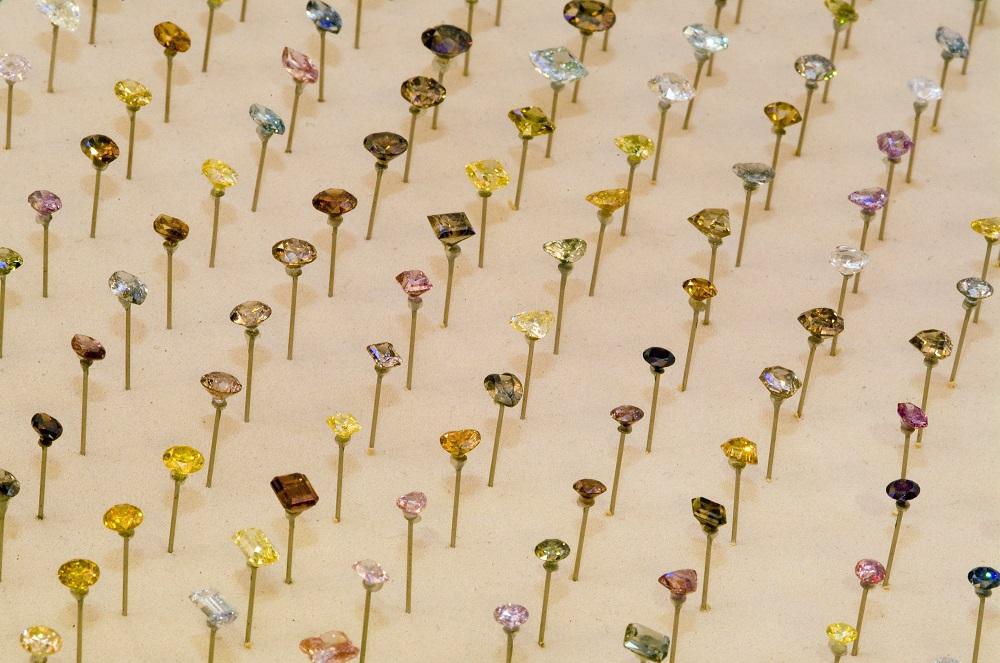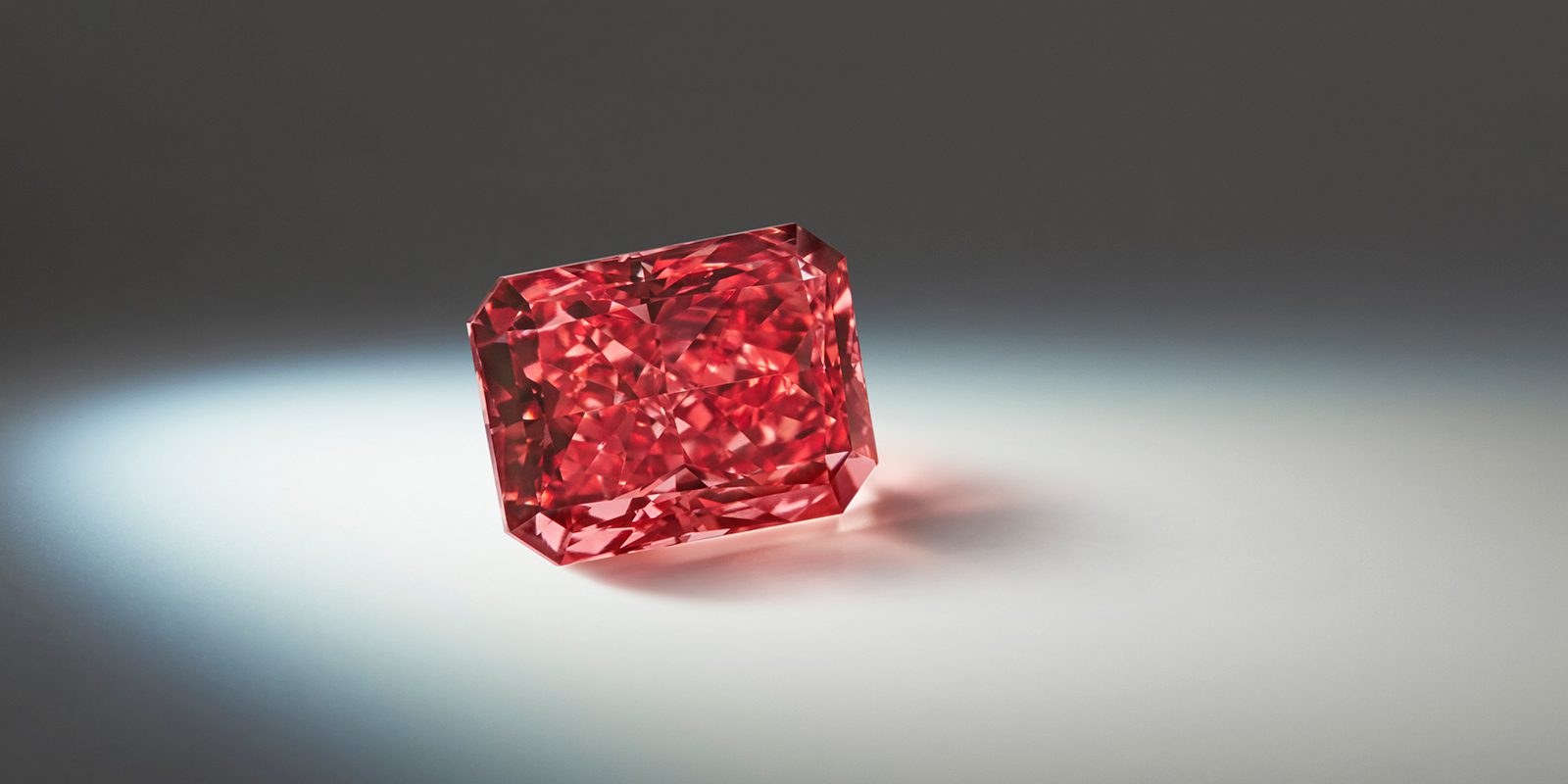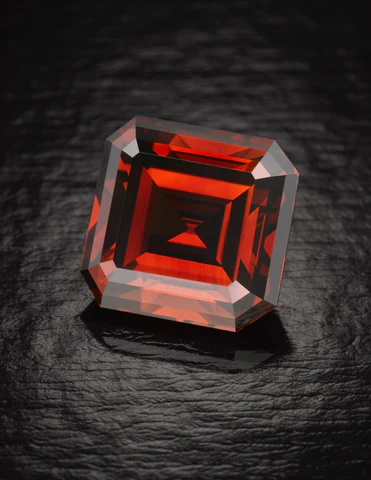
Diamonds are the most important of the gemstones used for personal decoration, and none are more elusive than the red diamond. Here, Gem-A tutor Pat Daly breaks down the chances of finding a fancy red diamond, and what specific conditions are required to achieve this fiery natural hue.
Most gem quality diamonds are near white in colour, in the GIA grading range D to Z. It is calculated that about one in ten thousand is fancy coloured and in only 40% of these can the colour be called ‘intense’.
Most fancy-coloured diamonds are brown (they may be described by the more appealing terms champagne or chocolate) or yellow, and only a small proportion are of other hues. For example, it has been calculated that 0.3% of coloured diamonds are the rare blue colour and red stones are rarer still. Stones of which the colour is graded unmodified red have been said to number less than 30 although, depending on grading criteria and information source, it may be in the low hundreds. The number may be increased by accepting stones in which the colour is modified by brownish, purplish or orange, but diamonds with a predominantly red colour remain exceptionally rare.

The Aurora Pyramid of Hope Collection at the Natural History Museum in London presents the full spectrum of natural diamond colours. Image copyright Trustees of NHM, London.
Diamond Chemical Composition
Diamond is composed essentially of carbon and may be white. Small amounts of nitrogen, substituting for carbon atoms in the structure are responsible for yellow colours. When there has been time, during many millions of years, for nitrogen atoms to aggregate in groups of three surrounding a vacancy, from which a carbon atom is missing, a brownish yellow “cape series” colour is seen. When this is strong enough, a diamond may be classed as fancy yellow. A more desirable, brighter yellow results if time was not available for nitrogen atoms to group together and if a high proportion are isolated in the crystal structure. When boron replaces carbon, it produces a blue colour. Irradiation, either natural or artificial, colours diamonds green.

The DeYoung Red Diamond, courtesy of the Smithsonian National Museum of Natural History.
Formation of Brown, Pink and Red Diamonds
It is thought that brown, pink and red colours result from distortion of their atomic structures. The causes are not known with certainty, but it is recognised that zones of colour coincide with planes of deformation. Many materials may be distorted by plastic deformation; crystals may change their shape when planes of atoms slide across each other without breaking the crystal; the planes along which movement occurs are called slip, or glide planes.
The process is seen in metals and is generally accepted as an ordinary property of these materials. It also occurs, usually at high temperatures and pressures, in some directions in the structures of crystals that are commonly thought of as brittle and unyielding. Diamond is one of these materials.

Argyle Everglow 2.11 carat radiant shaped Fancy Red. Image by Rio Tinto.
In most brown and pink to red stones, colour is concentrated in zones which correspond to glide planes; the more abundant they are, the stronger the colour. In pink stones, there is a gradation in colour, which becomes more intense as the number of glide planes increases, but they are rarely so concentrated that a diamond can be graded red. For most fancy colours, for example blue, even pale stones are entitled to the name but in the pink to red range, only those with the strongest colour are called red.
The Process of Plastic Deformation
The plastic deformation of diamond takes place when diamond bearing rocks are heated and squeezed during the slow convergence of masses of continental rocks. Such tectonic events do not guarantee that diamonds will be deformed because diamond deposits, or large parts of them, may escape deformation, which may not affect all the rocks of a region.
Red diamonds have been recorded from most diamond producing countries, but the mine which produced the highest proportions of brown, pink and red diamonds was the Argyle mine, in the Kimberley region of Western Australia. During its period of operation, this mine was the main world producer of pink to red diamonds, though only about 0.1% of its production was of these colours, and only a few stones per year qualified as red. For comparison, about 70% of its stones were brown.
The Rarest Diamonds
There are, therefore, several reasons why red diamonds are exceptionally rare. Their colour requires deformation during continental collision, a rare pink to red colour must develop instead of the much more common brown, and it must be sufficiently intense to justify grading the stone as red, rather than vivid pink.

The Kazanjian Red diamond, courtesy of www.kazanjian.com.
The number of red diamonds known to exist represents an almost vanishingly small proportion of the diamonds in the jewellery trade. For a long time, the existence of red diamonds was doubted, and there are no records of them before the 20th century.
Famous Red Diamonds
The following examples give some idea of the size range and values of these stones. Firstly, there’s the Kazanjian red diamond, found in about 1927 in South Africa, which appears as a 5.05ct emerald cut. Next, the DeYoung Red is a dark reddish-brown round modified brilliant cut, weighing 5.03ct, which was bought about 1930-40 and set in a scarf pin. It was initially believed to be a garnet! It is now displayed in the Smithsonian Museum of Natural History.
The Moussaieff red diamond, found as a 13.90ct piece of rough in Brazil in the 1990s and cut to a 5.11ct trilliant, is the largest red diamond known. A smaller, but no less famous example is the 0.95ct Hancock red diamond, also found in Brazil. It surprized gem traders in 1987, when it was sold for $880,000. Most other red diamonds weigh less than 0.50ct, with only a few exceeding 1.00ct. the value of these smaller stones reflects their rarity, however, with those above 0.20ct usually exceeding $500,000 per ct.
Enhance your diamond knowledge by studying the Gem-A Diamond Diploma or participate in our Diamond Grading and Identification Lab Class for practical, hands-on experience.
Main image: The DeYoung Red Diamond, courtesy of the Smithsonian National Museum of Natural History.


